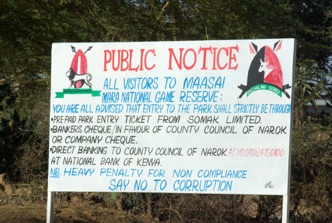kenyaView







Problems of Kenya: Corruption and Violence
Corruption is a huge problem in Kenya, both at the macro level, where some government ministers and officials, at both the national and local levels put tax and aid money straight into their own pockets, and at the micro level where people have to pay bribes to get public servants to do things that are supposed to be the job they have already been paid for. It is possible to have sympathy for this micro corruption, up to a point, since these local officials are often miserably paid, and it is not difficult to imagine the temptation to try to get a little extra money to afford some small 'luxuries'. Even with this extra, these people's lives are very impoverished by the standards of developed countries. On the other hand, the people from whom the bribes are extracted are even poorer.
It is not possible to have sympathy for the large-scale corruption of public figures. After the presidency of Daniel arap Moi, a Kalenjin, 1978-2002, which had reached appalling levels of corruption, the election of Mwai Kibaki, a Kikuyu, on a reform platform was supposed to begin to eliminate corruption. However, this didn't happen, and after a disputed election in 2007, where Raila Odinga, a Luo, claimed to have been robbed of victory by ballot-rigging, there was nationwide violence between different ethnic groups. Between 700 and 1,000 are said to have been killed, and 250,000 to 600,000 displaced.
As a result, a Grand Coalition government was formed between the parties of the two leaders. However, with 41 ministers, this huge government simply seems to have more people who expect to be able to take a cut of tax revenues and aid money. Transparency International ranks the country 142nd in the world out of 163 on its corruption index. Most foreign governments no longer provide aid to the Kenyan government, but only to specific projects in Kenya.

Another problem of violence has arisen recently, with a United Nations report accusing the Kenyan Police of murdering gangsters and demonstrators. Over 1,000 killings, and 6,000 disappearances were involved.
Apart from this internal violence, Kenya is subject to overspill from civil war and inter-ethnic violence in its neighbours Somlia, Sudan, Ethiopia, and northern Uganda.